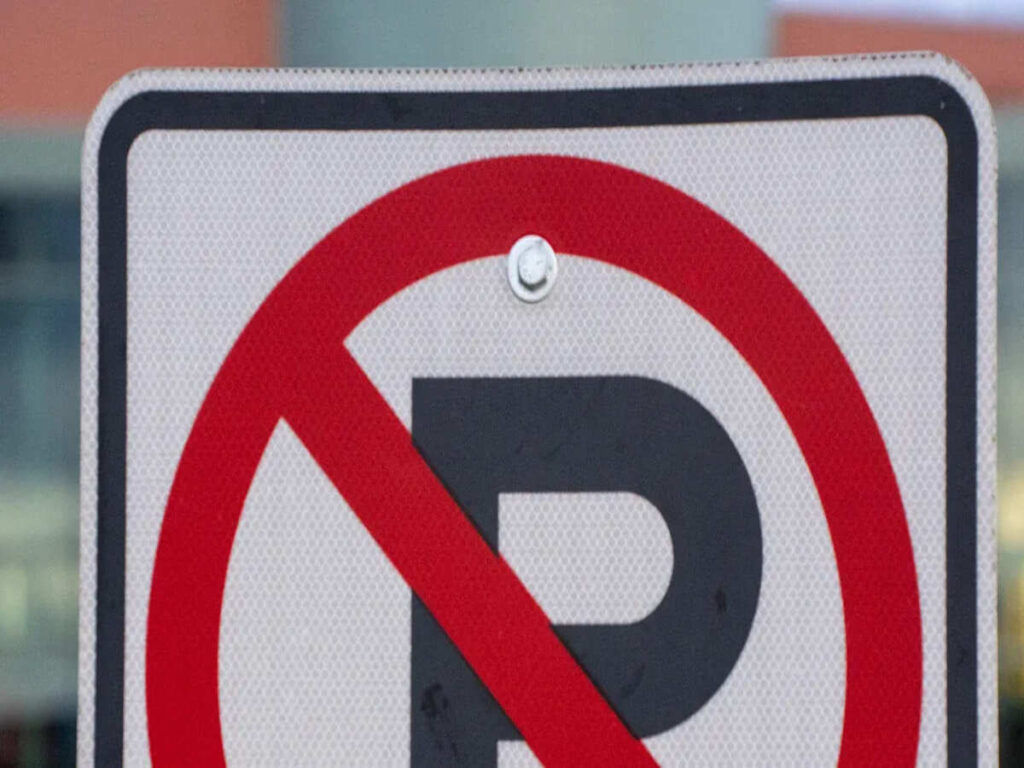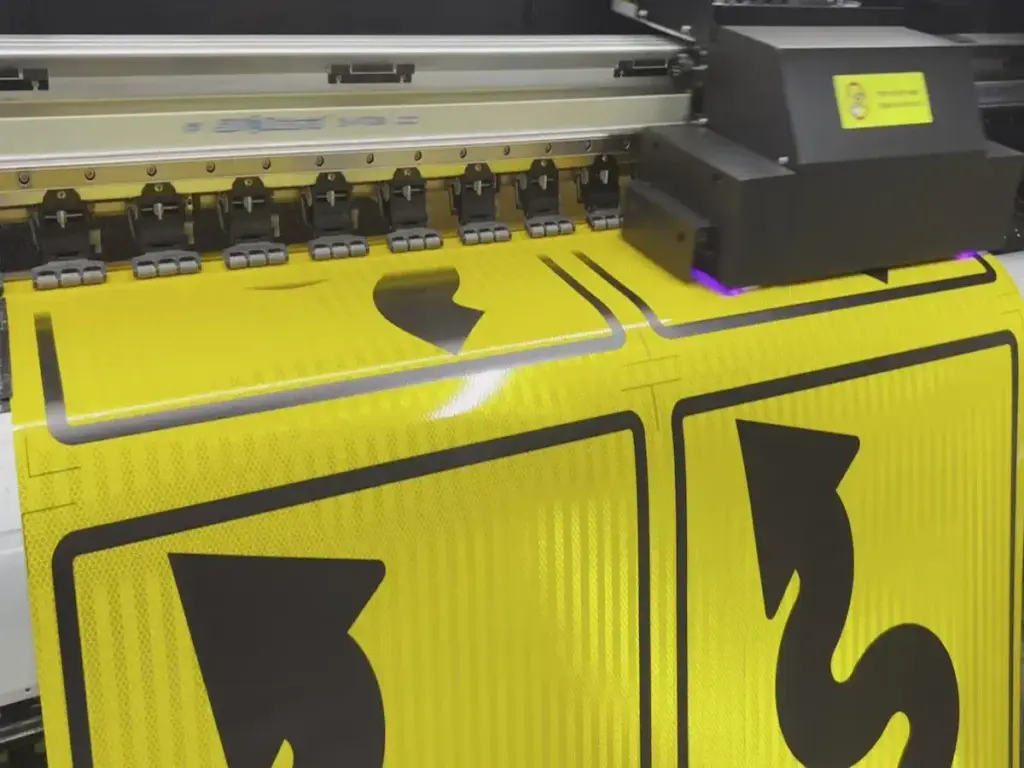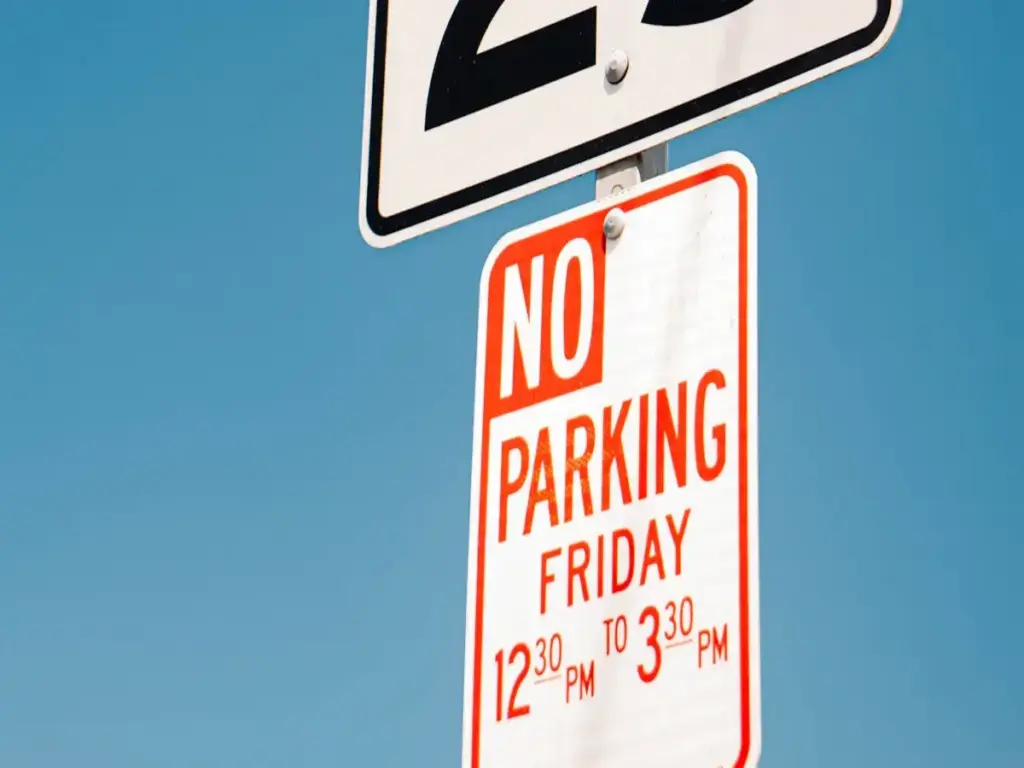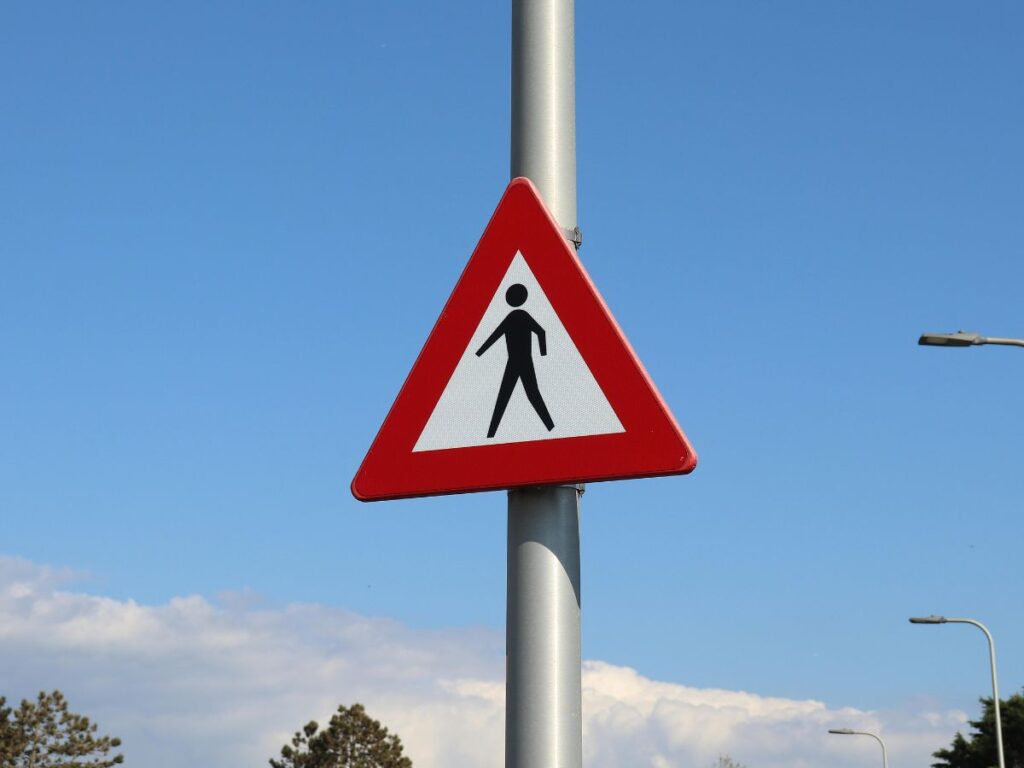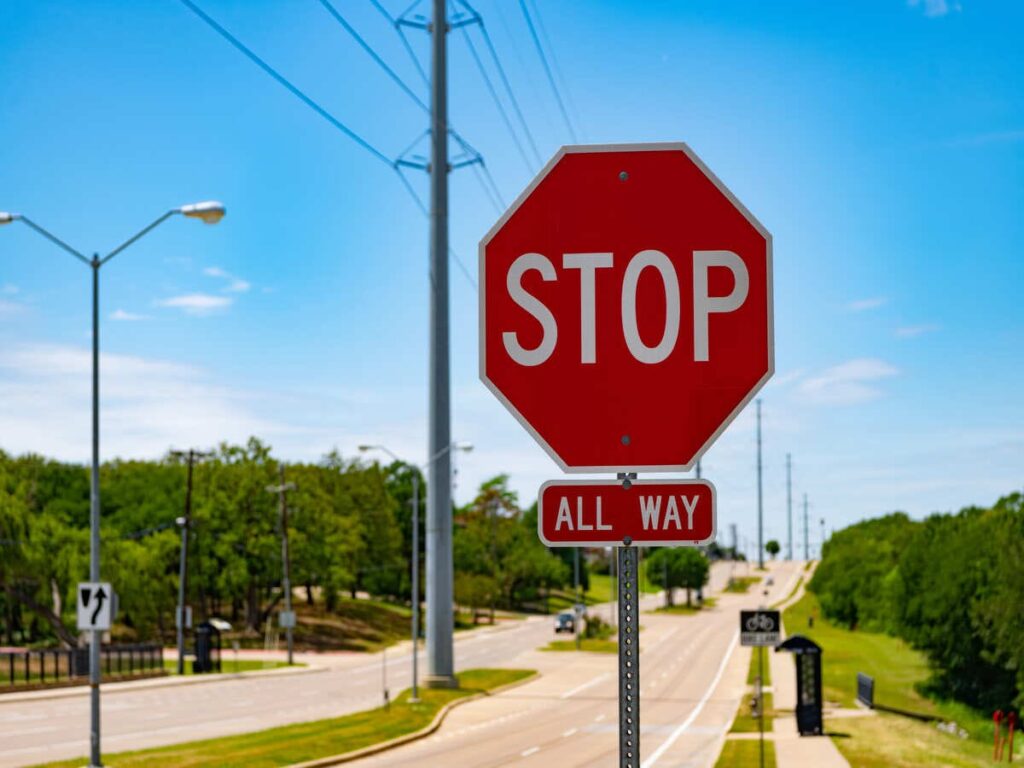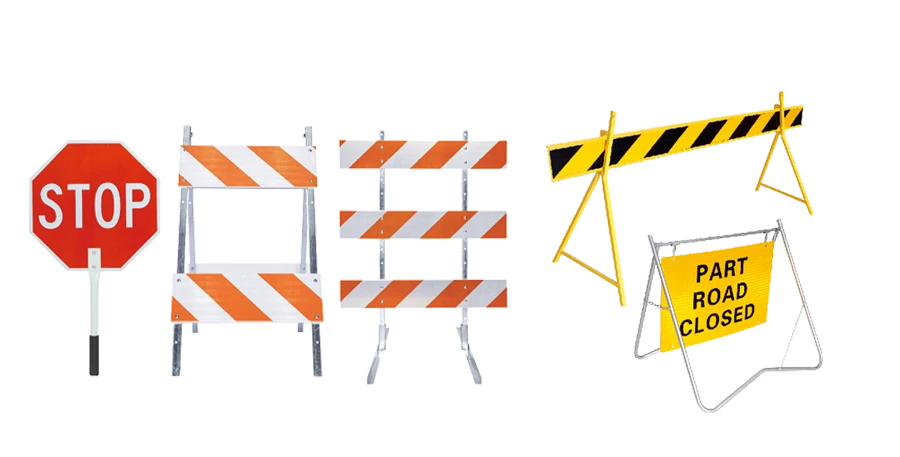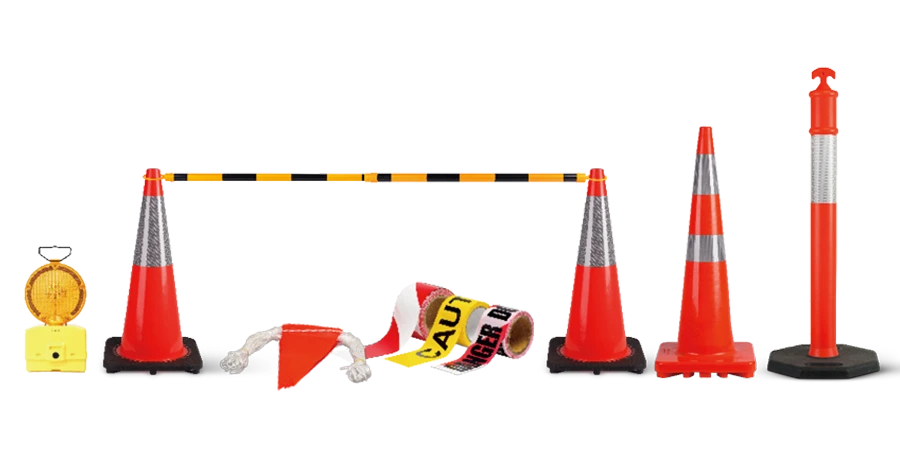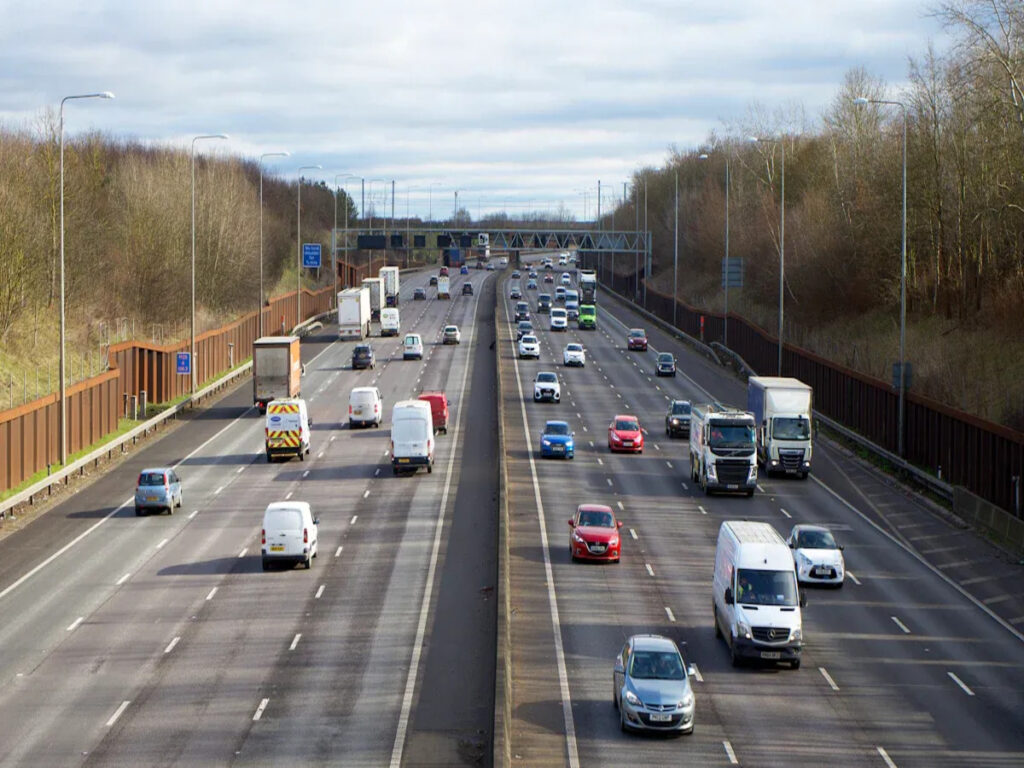
忙しい朝, 多くのドライバーはすぐに旅行します M25. すべての瞬間が重要です. ドライバーが警告サインを読むのに時間がかかりすぎる場合, 混乱やクラッシュさえも引き起こす可能性があります. 透明な関連プレートと構造マーキングは、速く運転するときにドライバーを安全に保つのに役立ちます. 規制道路標識は非常に重要です. 彼らは情報を見やすく、理解しやすいものにします, 悪天候や交通量が多い場合でも.
関連するプレートと構造マーキングがどのように交通の安全性と規制コンプライアンスを改善するかについてのより多くの洞察について, ブログをご覧ください, 英国の規制道路標識における関連するプレートと構造マーキングの役割.
キーテイクアウト
- 透明で適切に配置された関連プレートは、ドライバーが主な兆候を速く理解するのに役立ちます. これにより、英国の高速道路は誰にとっても安全になります.
- 反射的な素材とスマートテクノロジーは、悪天候で兆候を見やすくします. 彼らはまた、夜に助け、事故の可能性を低下させます.
- 厳格なルールはサイズを制御します, フォント, 色, 標識の配置. これにより、情報がシンプルになり、すべてのドライバーが同じようになります.
- ダイナミックな標識やより良いロードマーキングなどの新しいアイデアは、ドライバーがより速く反応するのに役立ちます. また、トラフィックがスムーズに移動するのにも役立ちます.
- 定期的なチェックと更新高速道路の標識は明確で信頼できることを確認します. これは、彼らが将来のスマートとグリーンのテクノロジーの準備をするのに役立ちます.
高速道路の課題
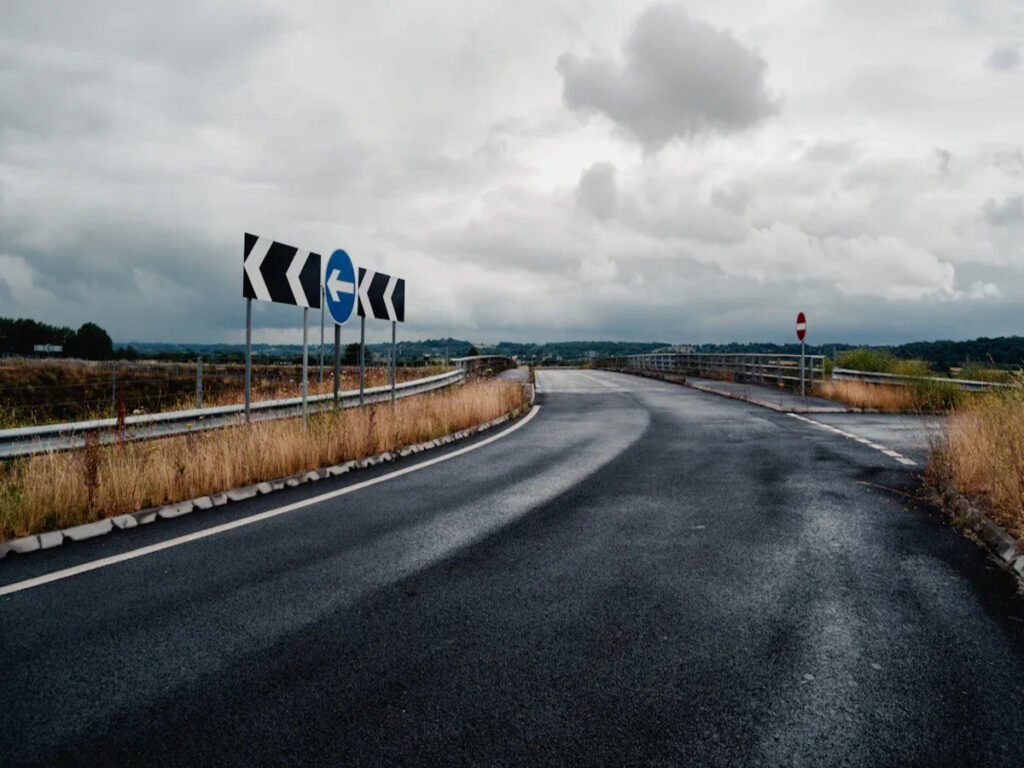
速度と反応時間
英国の高速道路は車が非常に速く行くので異なっています. 道路は広いです, ドライバーははるかに先を見ています. これは、彼らが兆候を見て反応する時間が少ないことを意味します.
- 広い道路により、車がより速くなります, したがって、ドライバーは迅速に決定する必要があります.
- 障壁は、車を逆の方法で離れ続けます. 遅い道路は狭い車線と隆起を使用して車を遅くします.
- 調査によると、ドライバーは簡単で読みやすい兆候が必要です.
- 標識は目の高さでなければなりません. これは、ドライバーが道路から目をそらすことなくそれらを見るのに役立ちます.
- 標識を置く場所には厳しいルールがあります. これにより、ドライバーが安全になり、気を散らされないようにします.
可視性の問題
高速道路の道路標識を見るのは難しい場合があります. 多くのことが兆候を見つけるのを難しくすることができます:
- 標識が小さすぎる場合、または文字が十分に大きくない場合, ドライバーは、速く運転するときにそれらを読むことができません.
- 光をよく反射しない兆候は、夜や悪天候で見るのが難しい. 高速道路の標識は、ドライバーが遠くからそれらを見ることができるように明るく輝く必要があります.
- 道路内の木や曲がりは標識をブロックする可能性があります, 特に田舎で.
- 十分な光がない場合, 標識は夜に読みにくいです. 点灯したり反映したりする兆候ドライバーがよりよく見るのに役立ちます.
- 雨, 霧, または、たくさんの車が標識を見るのを難しくすることもできます.
ドライバーの動作
ドライバーの行動は、関連するプレートと構造の警告マーキングにとって重要です. ドライバーはすぐにサインを読む必要があります, 多くの場合、4秒で, まだ道を見ている間. 標識が明確でないか、間違った場所にある場合, ドライバーは重要なものを見逃したり、混乱するかもしれません, 特に忙しい出口で. アドバンス方向の標識は、ドライバーが車線を変更したり、高速道路を離れる準備をしたりするのに役立ちます, それは物事をより安全にします. 標識の作成方法とそれらが置かれている場所は、ドライバーの行動方法と一致するように計画されています. これにより、ドライバーが必要な情報を迅速かつ明確に取得するのに役立ちます, だから彼らは安全に旅行することができます.
関連するプレートが説明されました
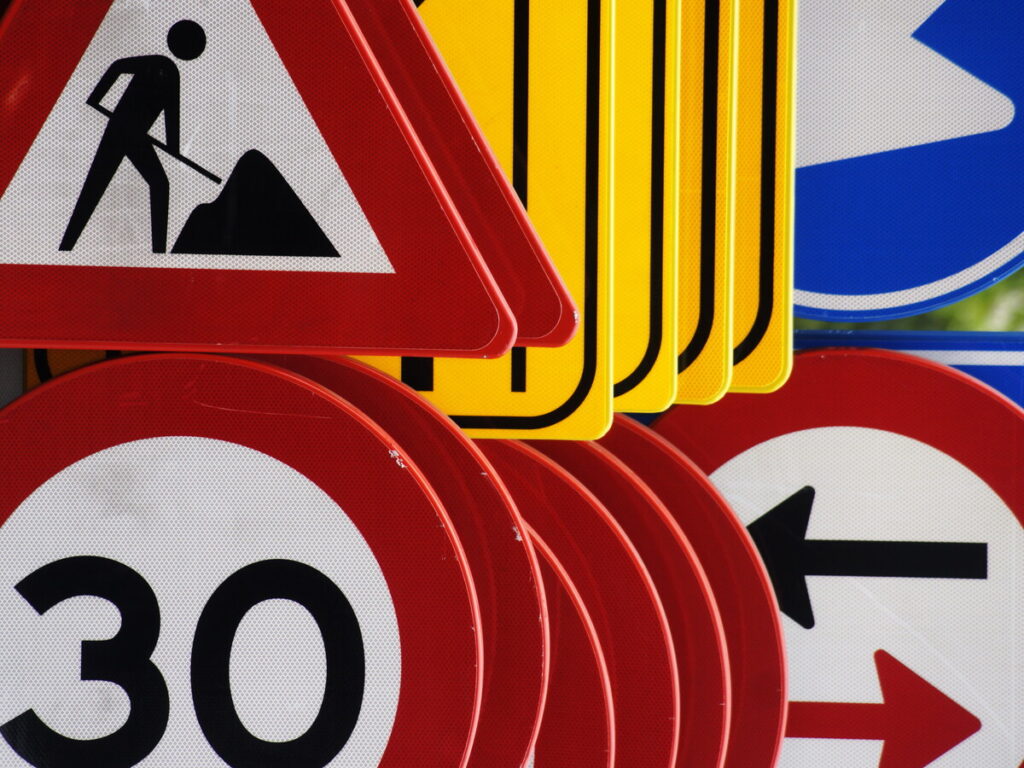
プレートの種類
関連するプレートは、英国の高速道路の主要道路標識の下にあります. これらのプレートは、ドライバーが主な兆候を理解するのを助けるために追加の詳細を提供します. いくつかの一般的なタイプがあります:
- 距離プレート 変化や危険がどれほど離れているかをドライバーに伝えます, のように “200 ヤード”.
- 警告プレート ドライバーに危険について知らせてください, 鋭い曲がりや低い橋など.
- 方向プレート どの車線を使用するか、どの車線が出るかを示して.
- 制限板 制限についてドライバーに伝えます, 車両の重量や身長のように.
各タイプには独自の仕事があります. 彼らは、ドライバーがそれを必要とするときに正しい情報を得るのを助けます.
コミュニケーションの役割
関連するプレートは、高速道路を安全に保つために重要です. 彼らは主な兆候に余分な詳細を与えます. 例えば, 道路工事の警告サインには、作業がどれだけ離れているかを示すプレートがあるかもしれません. これにより、ドライバーがより早く準備ができます. 方向プレートは、ドライバーがジャンクションの前に右車線を見つけるのに役立ちます. 規制プレートは、大型車両が低い橋の下や狭い車線に進入するのを防ぎます。.
注記: 関連するプレートからの明確で迅速な情報は、ドライバーの混乱や事故の回避に役立ちます.
これらのプレートはメインサインと連動します. ドライバーが重要な指示を見逃さないようにします, 特に高速で運転しているとき.
設計上の課題
設計者は、関連するプレートに関して解決すべきいくつかの問題を抱えています. プレートは遠くからでも読めるように十分な大きさでなければなりません. フォントは読みやすいものでなければなりません. 色は背景から目立つ必要がある. プレートは悪天候や夜間でも見やすくなければなりません. プレートをどこに置くかは非常に重要です. プレートはメインサインの真下に設置し、ドライバーの視界を遮らないようにする必要があります。.
以下の表は、デザイナーが考えていることを示しています:
| 要素 | 重要性 |
|---|---|
| サイズ | 高速で読みやすい |
| フォント | 明確で読みやすい |
| 色 | 高いコントラスト |
| 配置 | 可視および遮るもの |
デザイナーは厳格なルールに従います, 規制道路標識のようなもの, すべてのプレートが安全であることを確認します.
規制道路標準の基準
tsrgdの概要
The 交通標識の規制と一般的な指示 2016 tsrgdと呼ばれます 2016. 英国のすべての高速道路標識のルールを設定します. この法律は、イギリスで兆候が同じように見えるようにします, スコットランド, とウェールズ. tsrgd 2016 デザインの方法を人々に伝えます, 場所, 交通標識を使用します. それは形のようなものをカバーします, 色, サイズ, シンボル, そして、兆候が光をどのように反映しているか. これらのルールは、規制道路標識を明確にし、誰にとっても同じように保つのに役立ちます.
tsrgd 2016 古いルールをまとめて、現代の兆候に新しいルールを追加します. これには、デジタルディスプレイと可変メッセージサインが含まれます. 地方自治体はこれらの規則を使用しています. 彼らはいくつかのことを変えることができますが、全国で同じ兆候を保ちなければなりません. ルールは、英国の標識と他の国の標識と一致します. これは、地元と外国の両方のドライバーに役立ちます. TSRGDを使用する場合 2016, 道路管理者は事故を阻止し、交通を円滑に進めるのに役立ちます.
注記: 交通標識マニュアルは TSRGD と連携します 2016. 高速道路での規制道路標識の設計と設置をさらに支援します。.
標識のサイズと配置
高速道路の規制道路標識は大きくて読みやすいものでなければなりません. tsrgd 2016 各標識と関連するプレートの正確なサイズを示します. ドライバーが遠くからでも標識を視認できるように、設計者はこれらのルールに従っています. 標識は適切な高さと角度でなければなりません. 何も彼らを妨げるものであってはなりません.
関連プレート, 距離や警告板など, メインサインの下を右に進みます. これにより、ドライバーは追加情報をメイン標識に結び付けることができます。. 交通標識マニュアルには、標識を設置する場所に関するアドバイスが記載されています. これは交差点付近では重要です, 出口, またはレーンの変更. 同じ場所に標識を置くと、ドライバーがどこを見るべきかを知るのに役立ちます.
以下の表は、いくつかの重要な配置ルールを示しています:
| サインタイプ | 最小高さ | 配置場所 |
|---|---|---|
| メインサイン | 2.1 メーター | 車道の左または右 |
| 関連するプレート | 2.1 メーター | メインサインの真下 |
| オーバーヘッドガントリー | 5.2 メーター | 車道の上 |
反射マーキング
規制の道路標識を見ることは非常に重要です, 特に夜または悪天候で. 英国の規則は、すべての高速道路の標識が反射材料を使用しなければならないと言う. これらの材料は、車のヘッドライトをドライバーに跳ね返します. これにより、暗闇や雨の中で兆候が見やすくなります. 標準TD 26/17 道路のマーキングとスタッドは長い間明るく明確なままでなければならないと言います.
反射マーキングは、厳格な品質ルールに従う必要があります, UNECE規制のものと同様 104. 標識とマーキングは頻繁にチェックされて、それらがうまく機能することを確認します. 大型車両とトレーラーには反射的なストリップが必要です. これは、他のドライバーが暗いときにそれらを見るのに役立ちます. MOTテスト毎年、すべての反射マークが安全であることを確認してください.
ヒント: 道路当局は、色あせたまたは壊れた反射材料をすばやく交換する必要があります. これにより、規制の道路標識が見やすく安全になります.
コンプライアンスとベストプラクティス
英国の道路当局は、規制の道路標識と関連するプレートが法律に従うことを確認するための手順に従っています. これらの手順には含まれます:
- 同じ基準を使用して標識を表示するルールを満たす.
- 確認する正しい方法を選ぶ, セルフチェックや外部レビューのように.
- 英国の基準に対して製品のテストとチェック.
- デザインに関する良い記録を保持します, 作り, およびテスト.
- サインがルールを満たし、UKCAマーキングを使用する正式な声明を出す.
これらのことをすることによって, 道路当局は、すべてのサインを確認します, 皿, 高速道路でのマーキングは安全で高品質です. この慎重な作業は、英国の高速道路をすべての人にとって安全で滑らかに保つのに役立ちます.
看板の革新
反射技術
ここ数年, 高速道路の標識の反射技術は大幅に改善されました. メーカーは現在、ダイヤモンドグレードやプリズム映画などの特別な素材を使用しています. これらは、光をより良く跳ね返す小さなプリズムを持っています. これにより、兆候ははるかに明るくなり、遠くから見るのが簡単になります. 雨や雪が降っても, これらの兆候は明確なままです. などの企業 3m 道路当局と協力して、フェードしない反射シートを作る, 割れ目, または皮. これは、兆候が長年にわたって明るく安全であることを意味します.
他にも新しいアイデアもあります. メチルメタクリレートを使用するものもあります (MMA)-ベースの冷たいプラスチックペイント. ガラスビーズが混ざっているとき, 道路のマーキングはヘッドライトの下に輝きます. A117 Stockton Roadのような道路, これらのマーキングは、ドライバーが夜間によく見られ、古いものよりも長持ちするのに役立ちます. 新しいマイクロビーズ, ソヴィテックのエコースターのように, 塗料をよく貼り付けます. 彼らはすべての天候で働き、簡単に落ちることはありません. vizispotなどの構造化されたマーキングは、水を消します, したがって、濡れている場合は、ラインは透明なままです. SafeTrack LMのような強力な製品は道路によく固執し、輝き続けます, 事故を止めるのに役立ちます.
注記: これらの新しい反射テクノロジーは、情報が常に明確で簡単に表示されることを確認することにより、規制の道路標識に役立ちます.
ダイナミックでスマートな標識
ダイナミックでスマートな標識が変化し、ドライバーが英国の高速道路で情報を入手する方法. オーバーヘッドガントリーは、速度制限の変化と車線信号を示しています. これらの標識はリアルタイムデータを使用してトラフィックを制御し、人々を安全に保つのに役立ちます. 例えば, 車が車線で停止した場合, センサーに気づき、赤い「x」をオンにします’ その車線の上に署名します. これは、ドライバーに邪魔にならないようにして安全を保つように指示します.
政府は、ダイナミックな硬い肩を除去し、緊急避難所をさらに追加することにより、スマートな高速道路をより安全にしました. これらの領域は互いに近づき、より明るい表面とより明確な兆候を持っています. 停止した車両検出技術は、問題があるときに交通官が速く行動するのに役立ちます. 公開キャンペーンは、ドライバーにスマートな高速道路の標識の使用と従う方法を教えます.
スマートな高速道路の使用 インテリジェント輸送システム (その) 速度制限を設定し、車線を制御します. M42 Active Traffic Management Projectは、忙しい時期に硬い肩を開き、速度制限の変化を使用することで、トラフィックがより良くなり、旅の時間をより安定させることが示されました。 20%. これらのシステムは、ドライバーが適切な速度と車線を選ぶのに役立ちます, 旅行をより滑らかで安全にする.
構造マーキング
構造警告マーキングも良くなっています. LEDとハイコントラストのディスプレイは、メッセージを遠くからより明るくて読みやすくするようになりました. これらのディスプレイはまぶしさせず、あらゆる種類の光でうまく機能します. スマートトラフィックシステムはこれらの標識にリンクしています, したがって、トラフィックが変更されたときにメッセージを迅速に変更できます. ドライバーは、危険について警告を受けたり、良い時間に先に変化したりします.
定期的なクリーニングとチェックは、これらのマーキングをきれいに保ち、うまく機能します. これにより、汚れやダメージがメッセージを隠すことが止まります. デザイナーはより大きな文字を使用し、最高の高さと角度に標識を置きます, そのため、ドライバーは簡単に見つけて読むことができます. 厳格な可視性ルールを満たすことは、ドライバーに反応するのに十分な時間を与えます, それは突然の動きを止め、誰もがより安全に保ちます.
変更可能なメッセージサインの視認性の向上により、クラッシュが少なくなりました. ドライバーはより早く危険を見つけて、時間内に何をするかを変えることができます.
これらの新しい構造マーキング, より良い反射テクノロジーとスマートサインとともに, ドライバーが警戒し、道路で自信を持っているのを支援します. 彼らはすべてのメッセージが明確であることを確認することにより、規制道路標識をサポートしています, 素早い, そして理解するのは簡単です.
ベストプラクティスデザイン
配置戦略
関連するプレートと構造の警告マーキングを適切な場所に置くと、ドライバーが迅速に行動し、安全を保つのに役立ちます. 下の表は、高速道路にさまざまな標識を配置する重要な方法を示しています:
| サインタイプ / 状態 | 配置ガイダンス |
|---|---|
| 事前警告サイン | 車がより速くなると、さらに標識を置きます. で 20 MPH, 標識はあるべきです 225 足先. で 75 MPH, 標識は終わったはずです 1350 足先. サインにもっと単語や小さな文字がある場合, ドライバーがそれを読むことができるようにさらにそれを置いてください. |
| この先、信号有り / 停止準備 | 道路の両側に信号を先に置く. これらの後に標識を停止する準備をしてください. 標識が交通信号またはキュー用である場合、点滅ライトを追加します. |
| ランプメーターサイン | ランプの前にランプを前に置いてください. ランプ入り口の近くで標識を点滅させるときにランプを計量します. ランプメーターが機能しているときにフラッシュライトを使用します. |
| サインをマージします | 車が結合する場所にマージサインを置きます. ドライバーが見ているものをブロックしないでください. 湾曲したランプで道路のマージ標識に入るのを使用します. マージが発生しない場合は、マージサインを使用しないでください. |
| シェブロンアライメントサイン | 速度に基づいてシェブロン間のスペースを変更します. で 15 MPH, 使用 40 足. オーバーで 60 MPH, 使用 140 足. シェブロンを前に置いてください, の上, そして、曲げた後. LEDは、シボロンを見やすくすることができます. |
| メンテナンスとレビュー | メンテナンス中の標識がどこにあるかを確認してください. 標識が適切な高さと距離にあることを確認してください. 特別なケースには専門家の判断を使用します. |
これらの方法は、規制の道路標識と関連するプレートを見やすく理解しやすくするのに役立ちます, 車が速く進んでも.
タイポグラフィと色
クリアな書き込みと強い色は、ドライバーがすぐに標識を読むのに役立ちます. 優れたデザインの使用:
- ArialやClearViewのような単純なSANSセリフフォント. これらは、人々がより速く読み、混乱を止めるのに役立ちます.
- 大きな文字, 大胆な線, そして、文字の間の十分なスペース. これにより、標識が得られます 20% 読みやすい.
- 目立つ色, 青または緑の白のように. これらはどんな天気や光でも簡単に見えます.
- 同じフォント, サイズ, すべての高速道路の標識の色. これにより、ドライバーは情報をすばやく見つけることができます.
- 色を明るく透明に保つための定期的なチェック. 色あせた色により、ドライバーが反応するのが遅くなります.
英国のようなルールTSRGDのようなルールフォントと色の標準を設定して、標識を安全で読みやすい状態に保つ.
一貫性
すべてのサインを同じように見せて作業するのに役立つドライバーが彼らを信頼し、安全な選択をするのに役立ちます. サインが常に同じ場合, ドライバーは何を期待するかを知っています. これにより、混乱と突然の動きが止まります. TSRGDのような国家規則規制道路標識が均一に見えることを確認し、明確なメッセージを持っていることを確認します. 調査によると、ドライバーはおなじみのシンボルを使用しています, 書き込み, ルートを選んで警告に反応する色. サインを同じに保つことは、トラフィックがスムーズに移動するのにも役立ちます, ドライバーは考えすぎる必要はありません. 標識を明確で予測可能にすることによって, 道路当局は、誰もが安全かつ自信を持って旅行するのを助けます.
影響と未来
安全性の結果
新しいタイプの標識により、英国の高速道路がより安全になりました. 研究では、明確な兆候がドライバーがより良い選択をするのに役立つことが示されています. これは、ドライバーが道路をよく知らない場合に当てはまります. アイトラッキングの研究では、単純な研究が見つかりました, 簡単に見にくい標識は、ドライバーが出口の準備をするのに役立ちます. これらの兆候も間違いを低下させます. 可変メッセージサイン (VM) うまく機能します. いくつかの道路で, これらの標識は、事故の数をまでに削減します 34%. ドライバーはライブアップデートに対してよりよく反応します. これは、突然の車線の変化が少なくなり、交通蓄積が少ないことを意味します. これらの変更により、すべての人にとって旅行がより安全になります, 高速道路をあまり使用していない観光客や人々でさえ.
継続的な改善
専門家は、高速道路の標識を改善するために働き続けています. 彼らは最良の方法に従い、国家のルールに固執します. 定期的なチェックと修理は、フリート車両を安全に保ち、うまく機能します. ドライバートレーニングは、安全な習慣と新しいルールを教えています. 多くの企業がフリート管理ツールを使用して運転を視聴し、アドバイスをする. これにより、ドライバーは間違いを速く修正するのに役立ちます. 良い記録を保つことで、マネージャーは危険を早期に見つけ、クラッシュが起こる前に行動することができます. 公正なルール, ドライバーの時間をチェックするように, 疲れを止め、道路を安全に保ちます. これらのすべてのステップは、英国の高速道路で強力な安全文化を構築するのに役立ちます.
定期的なチェックと明確な安全規則は、クラッシュを止め、道路をうまく動かし続けるのに役立ちます.
将来の傾向
高速道路の標識はすぐにさらに良くなります. 新しいアイデアは、すべてのドライバーにとってより賢く、より簡単にサインを作ります.
- スマートサインは都市システムとリンクしてライブを与える, 情報の変更.
- デジタルサインはすぐに更新され、ドライバーと話すことがあります.
- より多くの言語の標識は、多くの場所からの人々を助けるでしょう.
- シンプルなデザインは、速く運転するときに標識を読みやすくします.
- 拡張現実は、携帯電話やタブレットを通じて助けを与えることができます.
- エネルギーを節約する緑の素材とライトは、惑星を助けるでしょう.
- GPSベースのサインは個人的なルートを与え、ドライバーが自分の道を見つけるのを助けます.
これらの新しいアイデアは、英国の高速道路をより安全にするでしょう, 誰もがもっと開かれています, そして将来の準備ができています.
高速道路で適切な関連プレートと構造マーキングを作成するのは簡単ではありません. 明確で見やすい状態を保つには、標識を頻繁にチェックする必要があります. スマートシステムと問題を報告する人々は、兆候をうまく機能させるのに役立ちます.
- デジタルやIoT対応のサインなどの新しいアイデアはすぐに更新を提供します. これにより、ドライバーは旅行を安全に保つことができます.
- 英国の規則に従うことで、兆候は高品質を維持し、一般の人々との信頼を築きます.
これらの変更は、国の交通安全計画と一致します. よりスマートな緑の標識を使用すると、英国の高速道路が安全に保ち、すべての人のためにうまく機能するのに役立ちます.
よくある質問
英国の高速道路の関連プレートとは何か?
関連するプレートは、主要な道路標識の下にあります. 彼らは何かがどこまでであるかのような特別な詳細を提供します, どちらの方向に, またはどのようなルールに従うべきか. これらのプレートは、ドライバーがメインサインの意味を知るのに役立ちます. これは、車が速く動いているときに非常に役立ちます.
なぜ高速道路の標識が反射材料を使用するのか?
反射材料は、夜または悪天候で兆候を際立たせるのに役立ちます. ヘッドライトがサインに輝くとき, 素材は光を返します. これにより、ドライバーがサインを見やすくなります, 暗くなったり雨が降ったりしても.
道路当局はどのくらいの頻度で高速道路の標識をチェックします?
道路当局は、毎年何度も高速道路の標識をチェックしています. 彼らは壊れた兆候を探します, 色あせた色, または、ビューをブロックするもの. これらのチェックは、すべてのサインが見るのが簡単で安全であることを確認します.
スマートサインは高速道路の安全性を向上させます?
スマートサインは、ライブデータを使用してメッセージを変更します. 彼らはドライバーに危険について話します, 速度の変化, または閉じた車線. これにより、クラッシュが停止し、トラフィックがうまく動き続けます.

